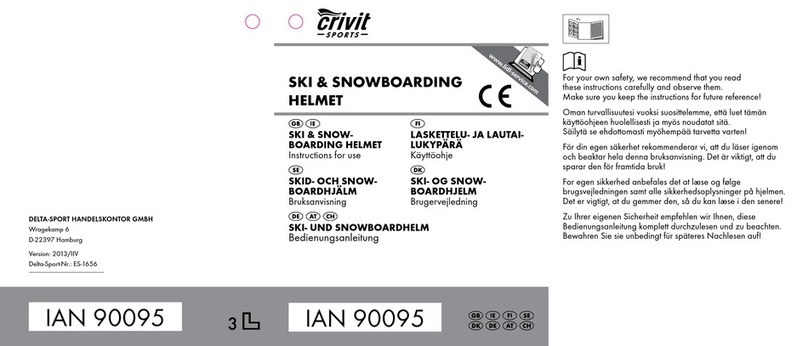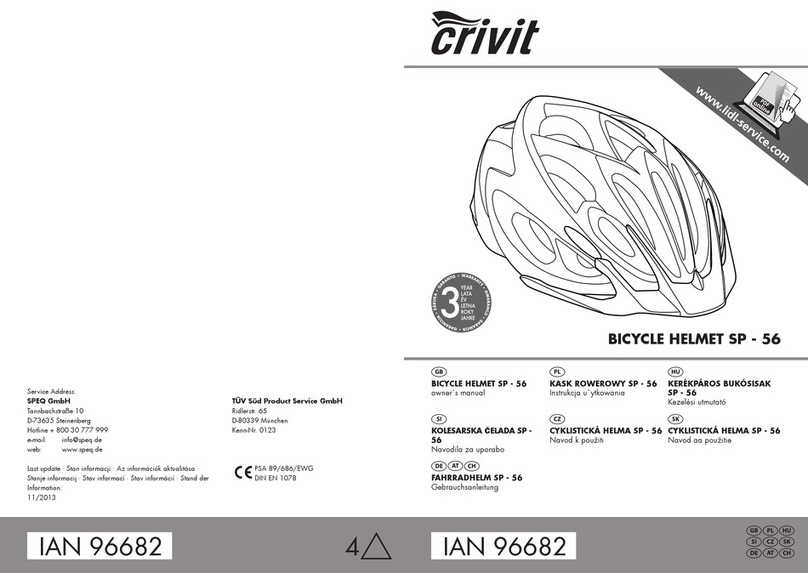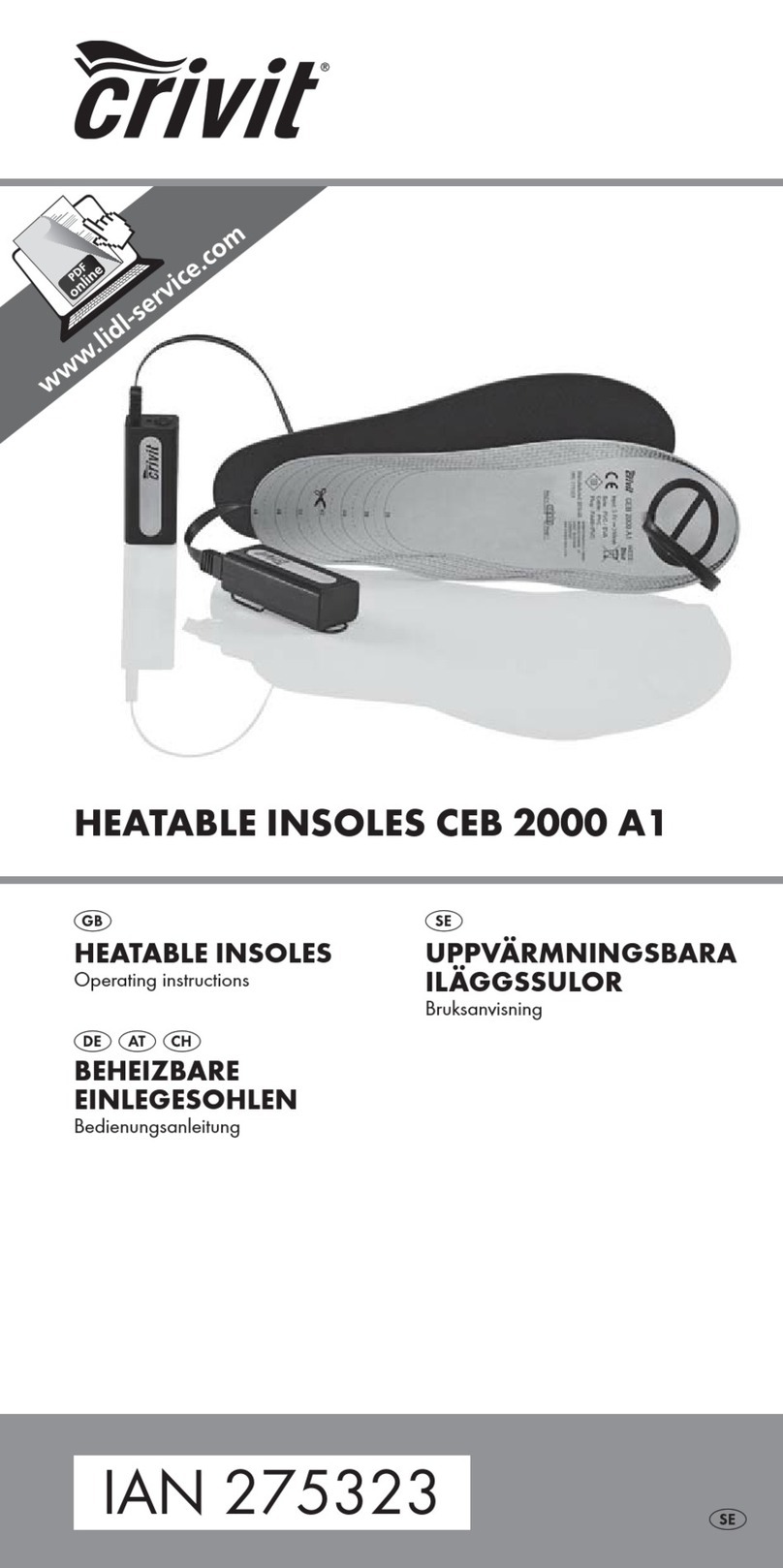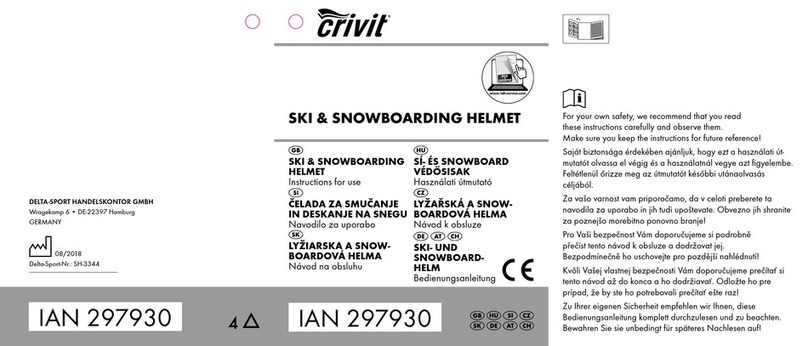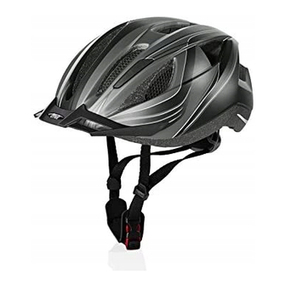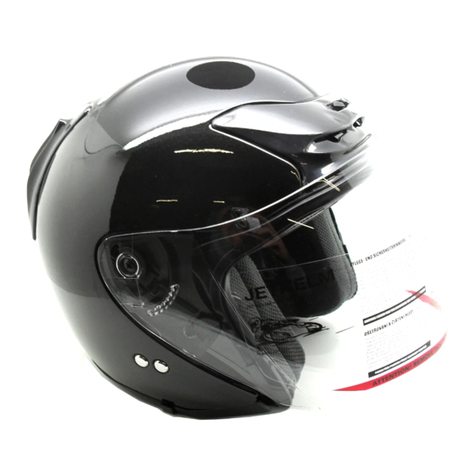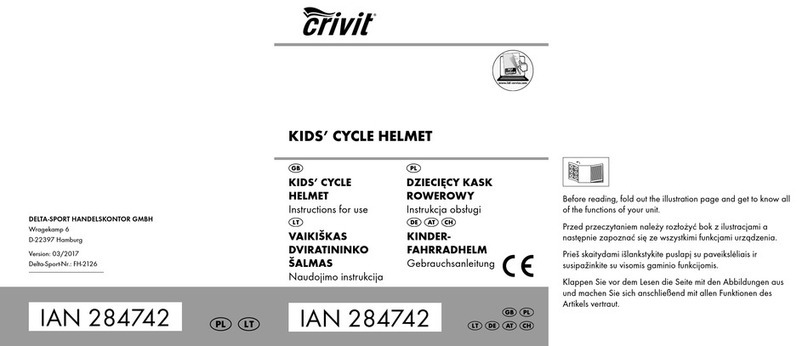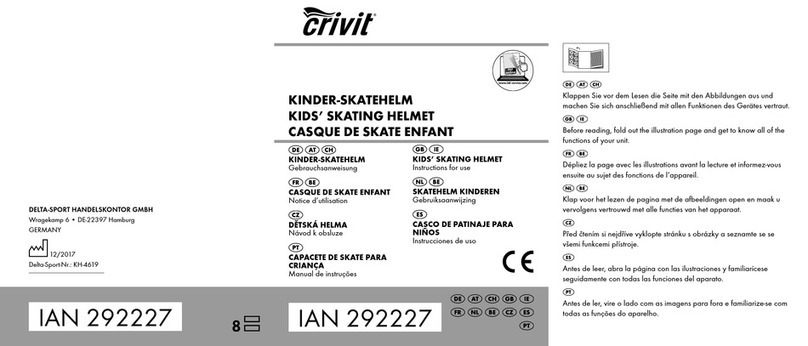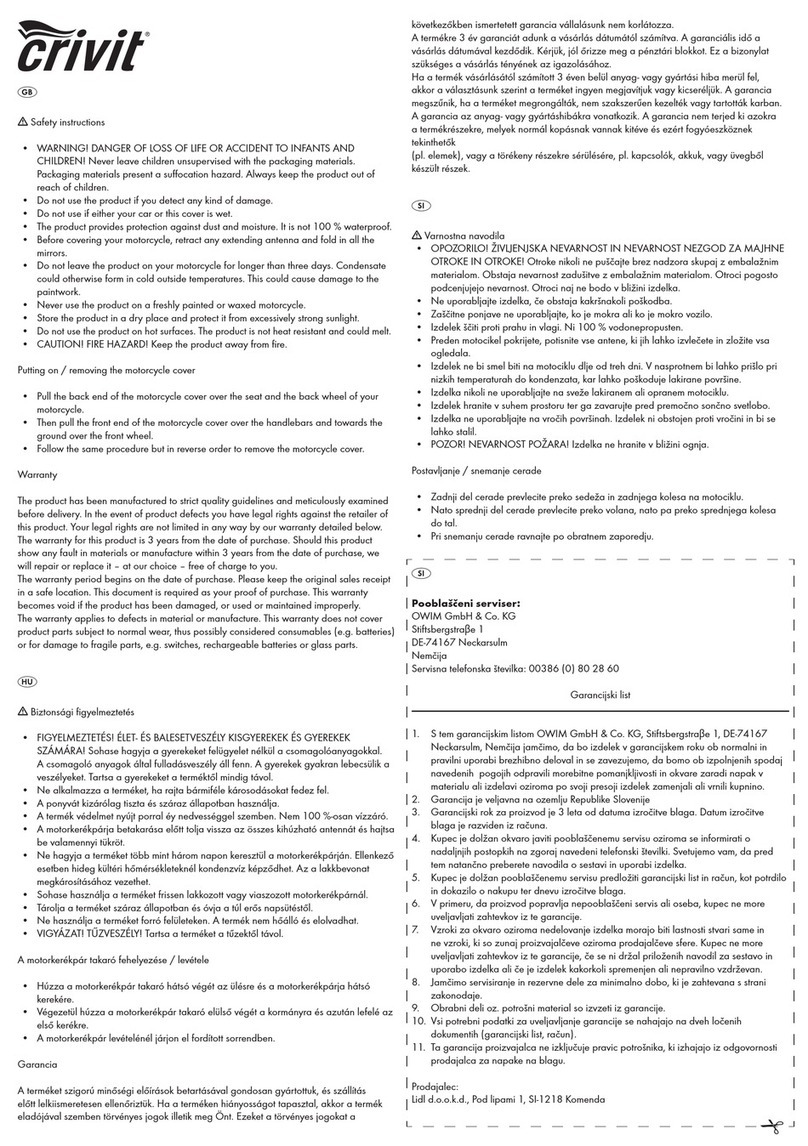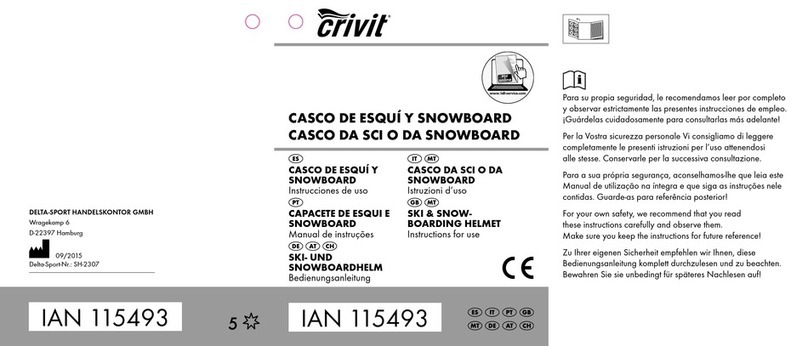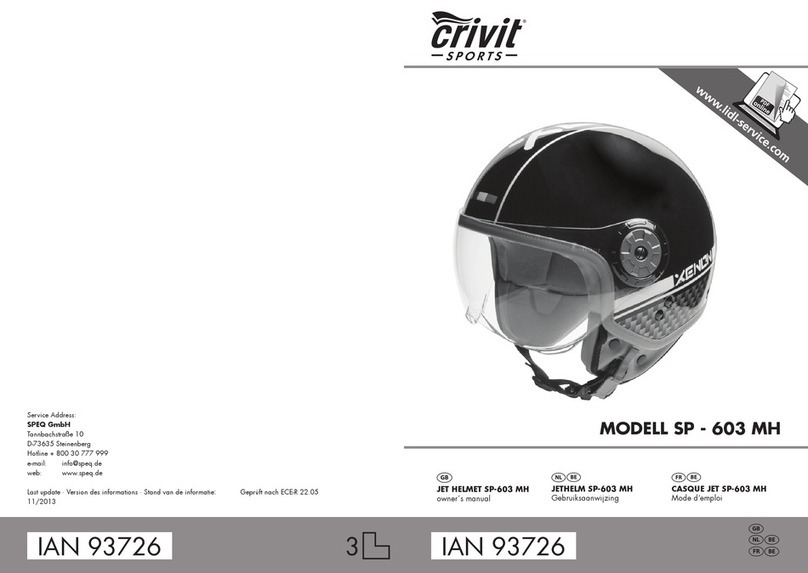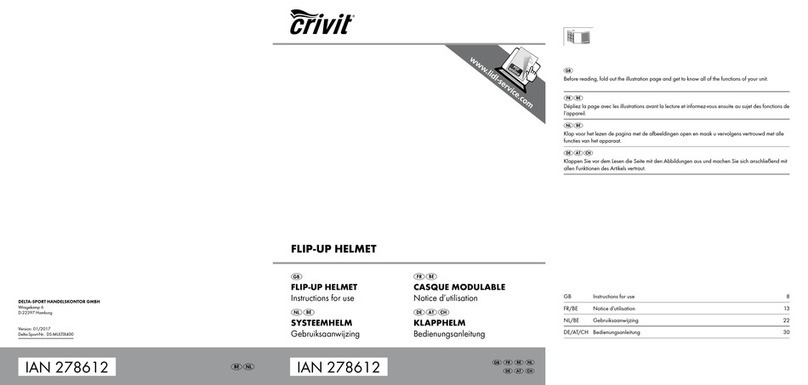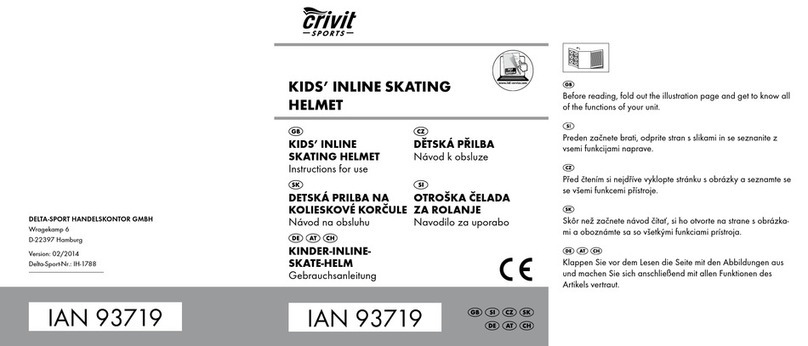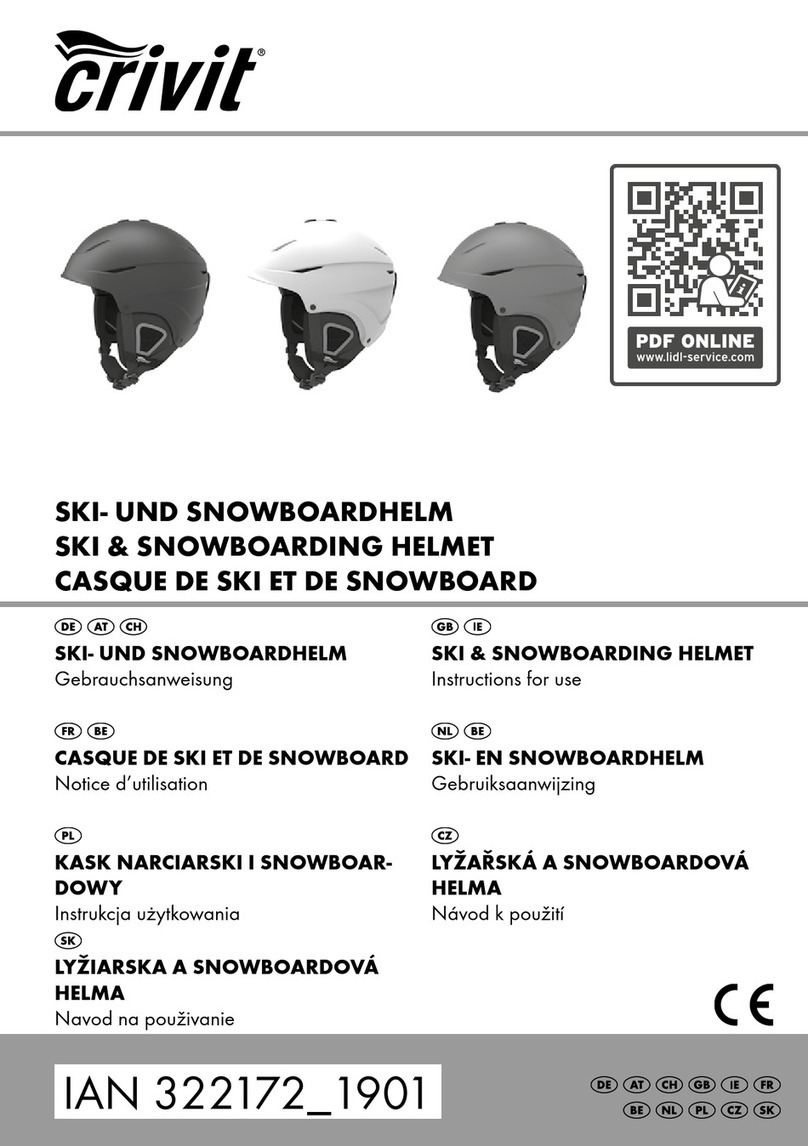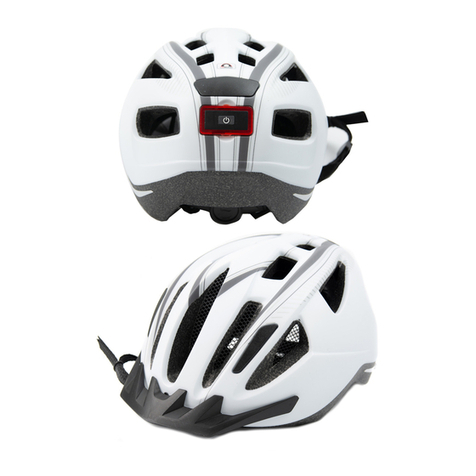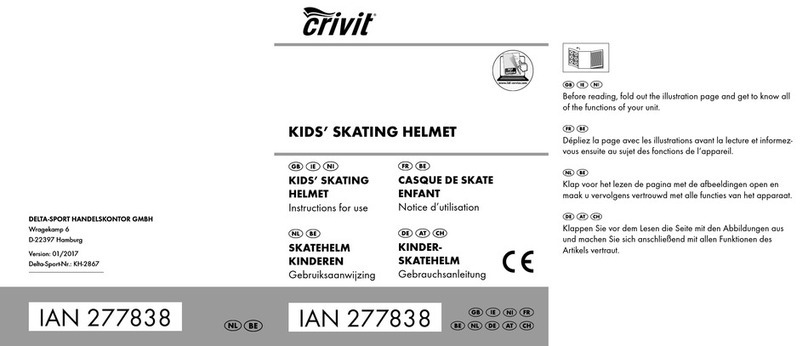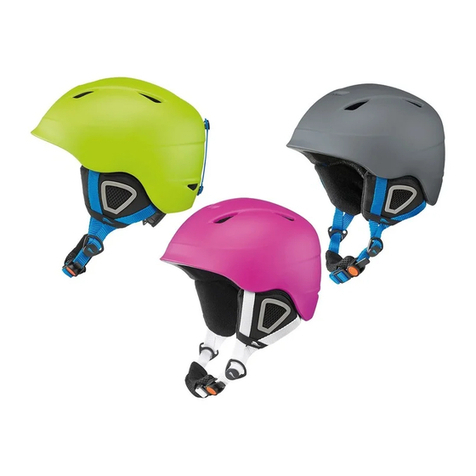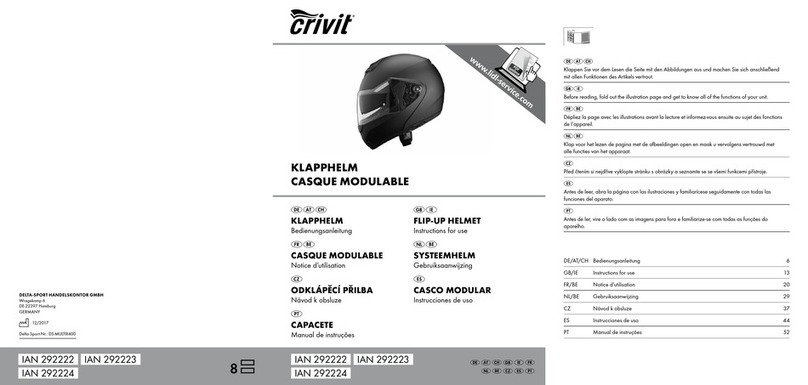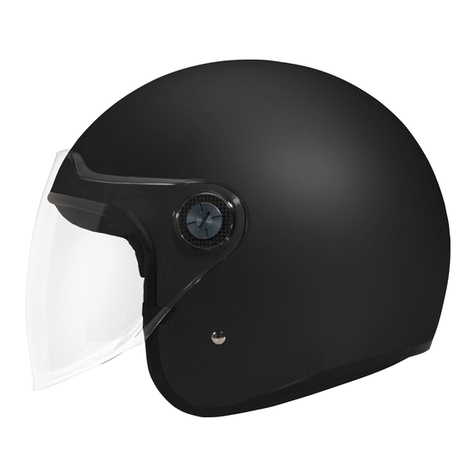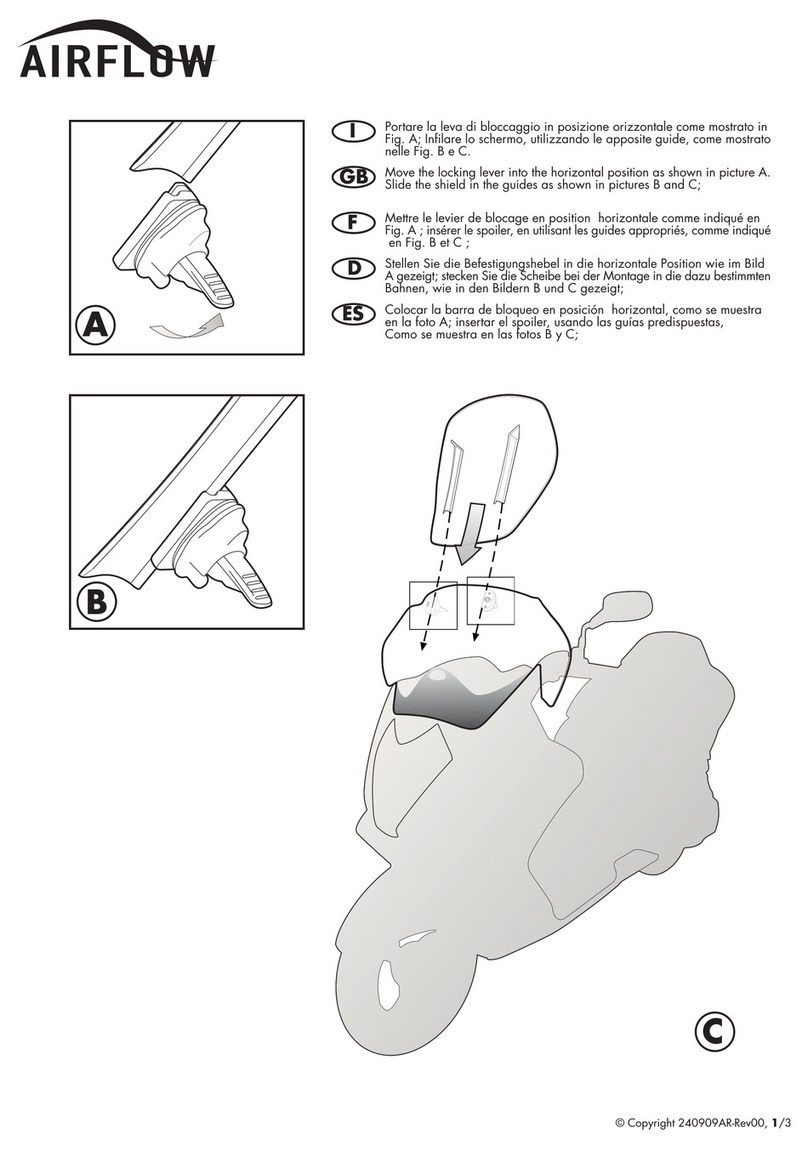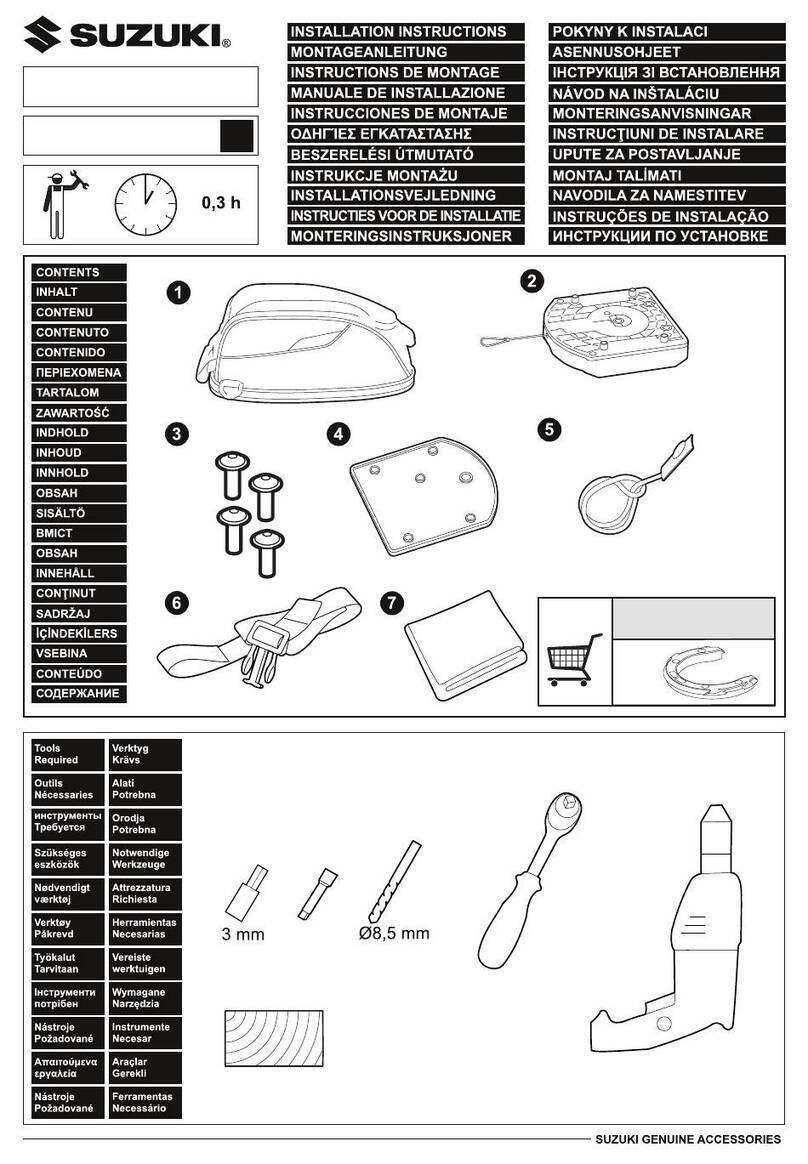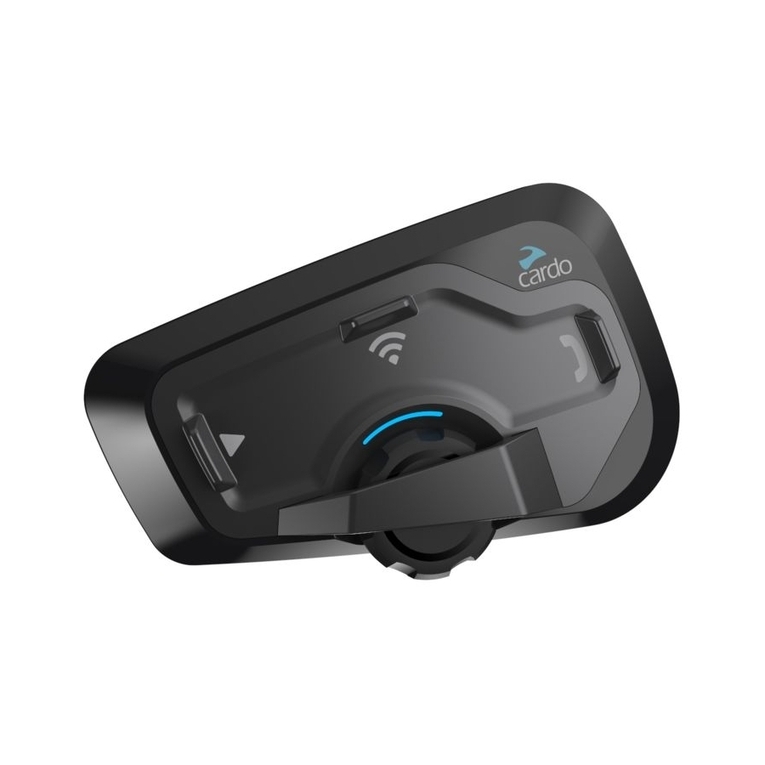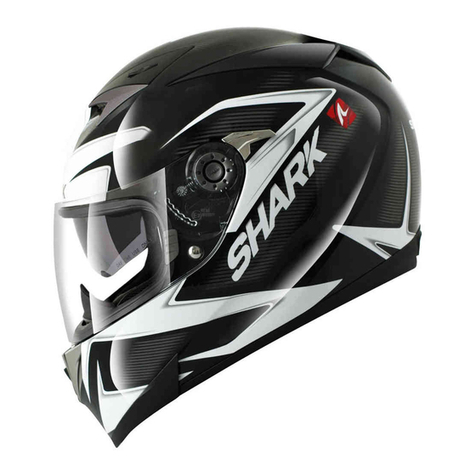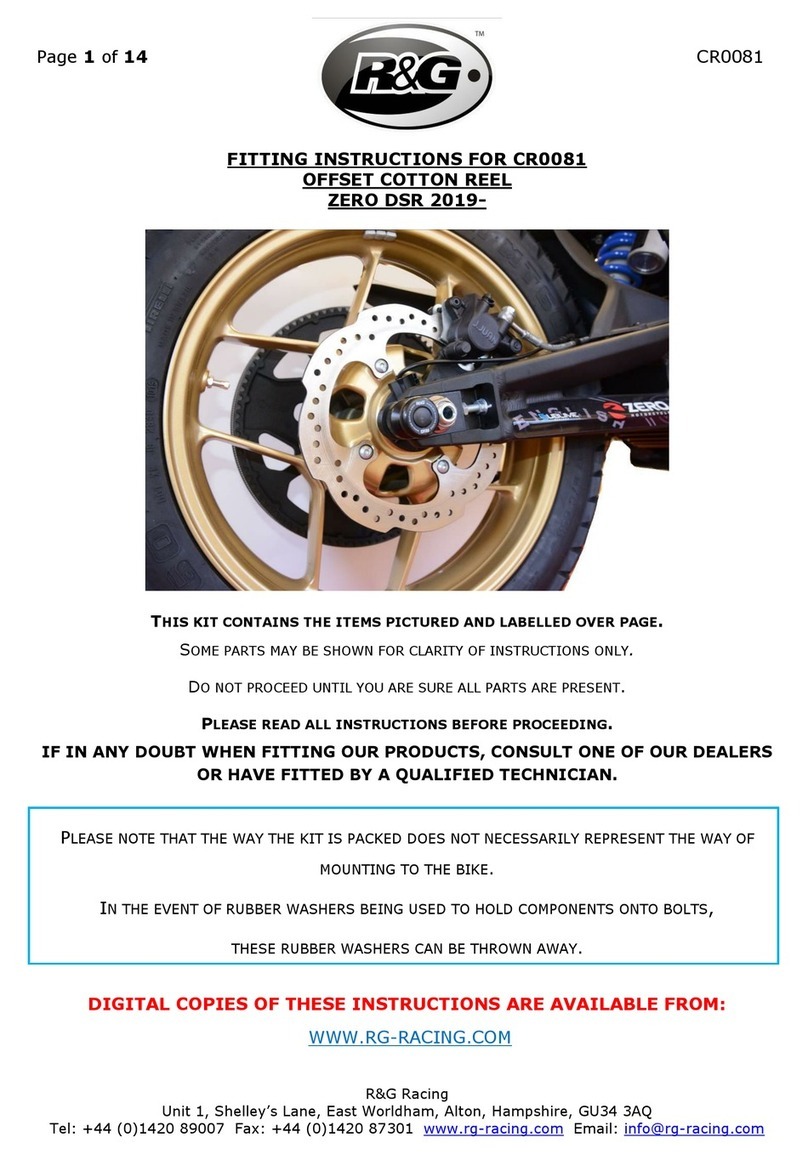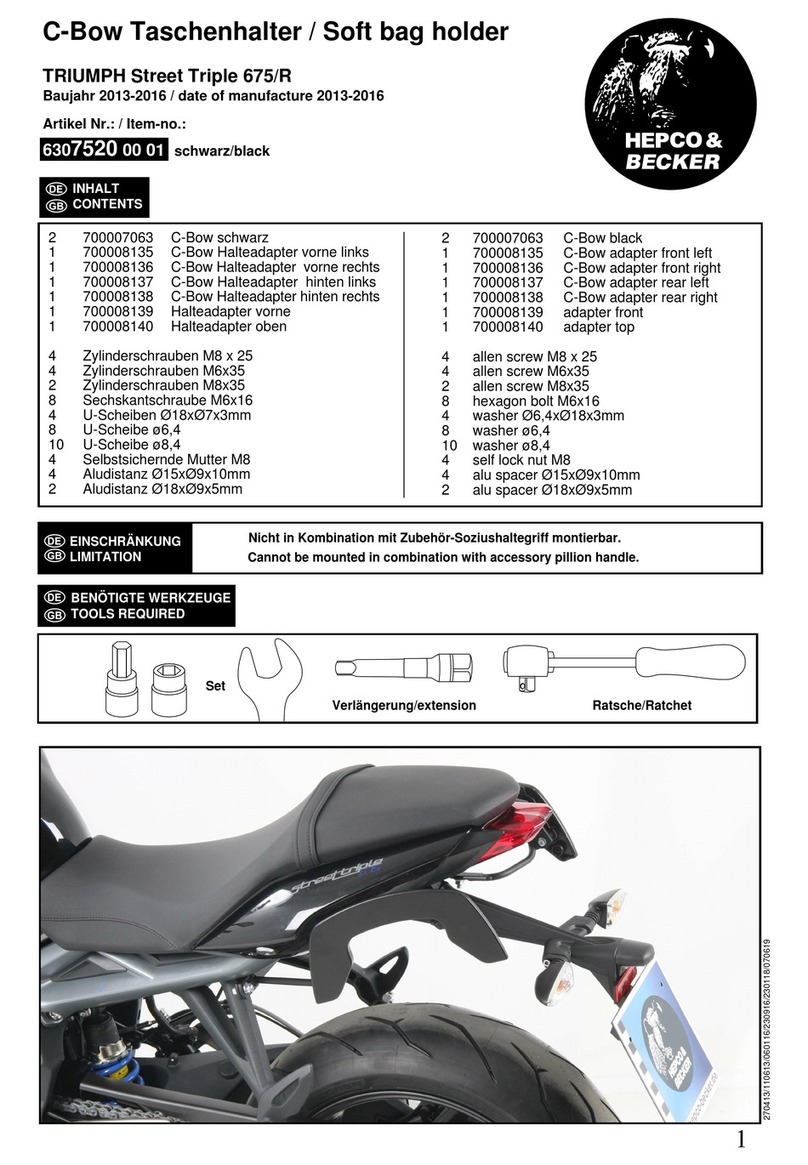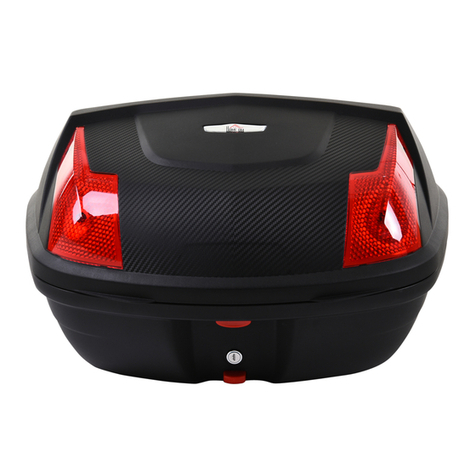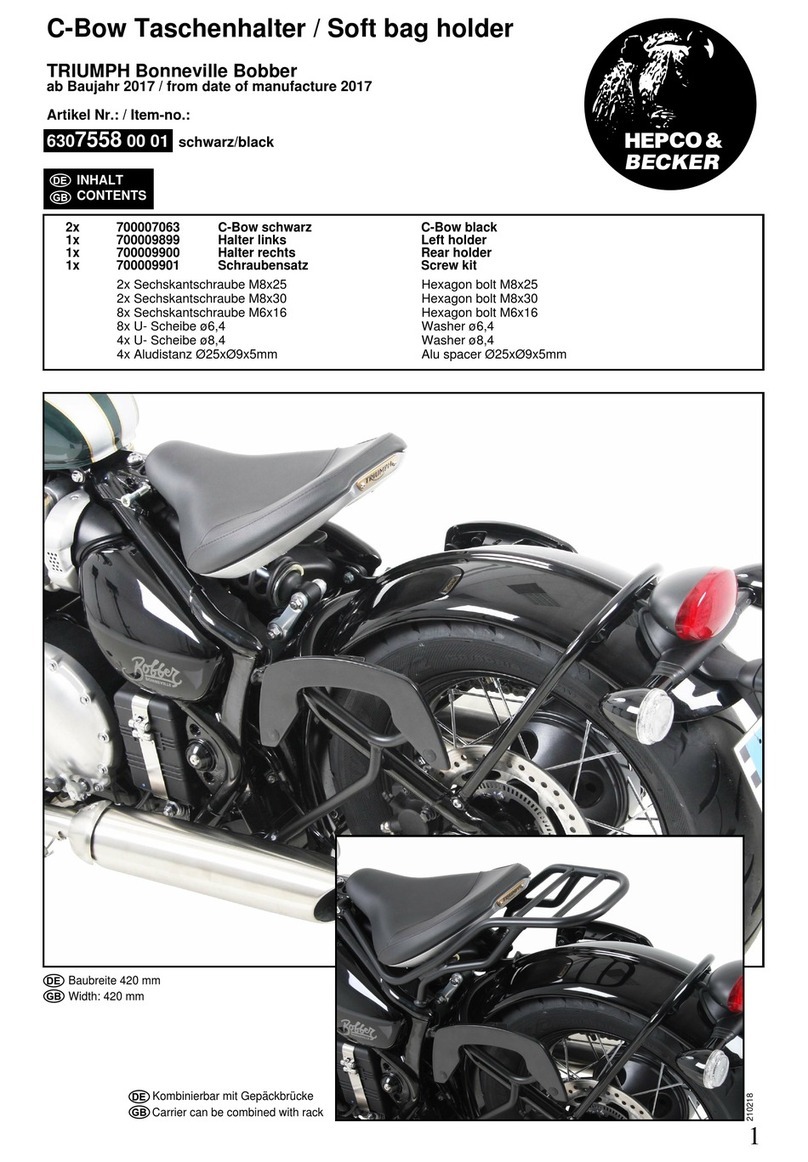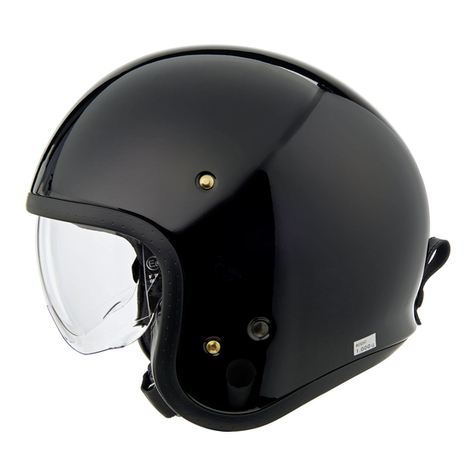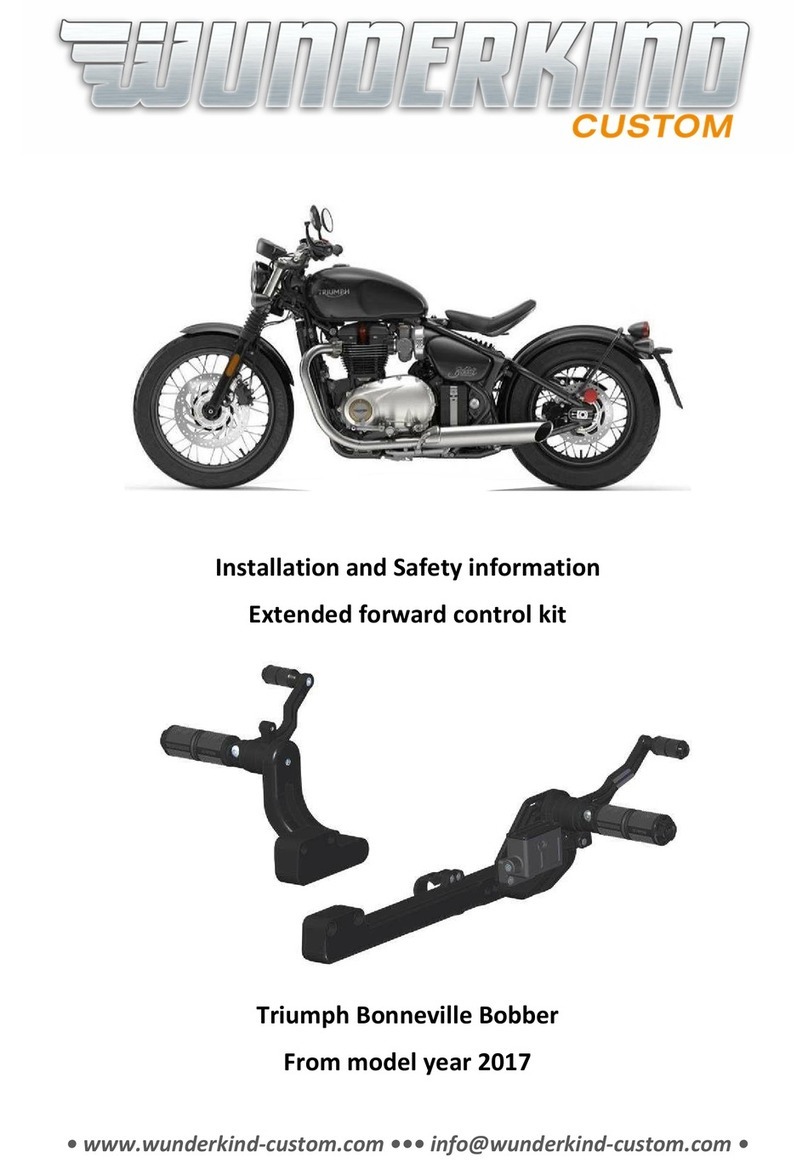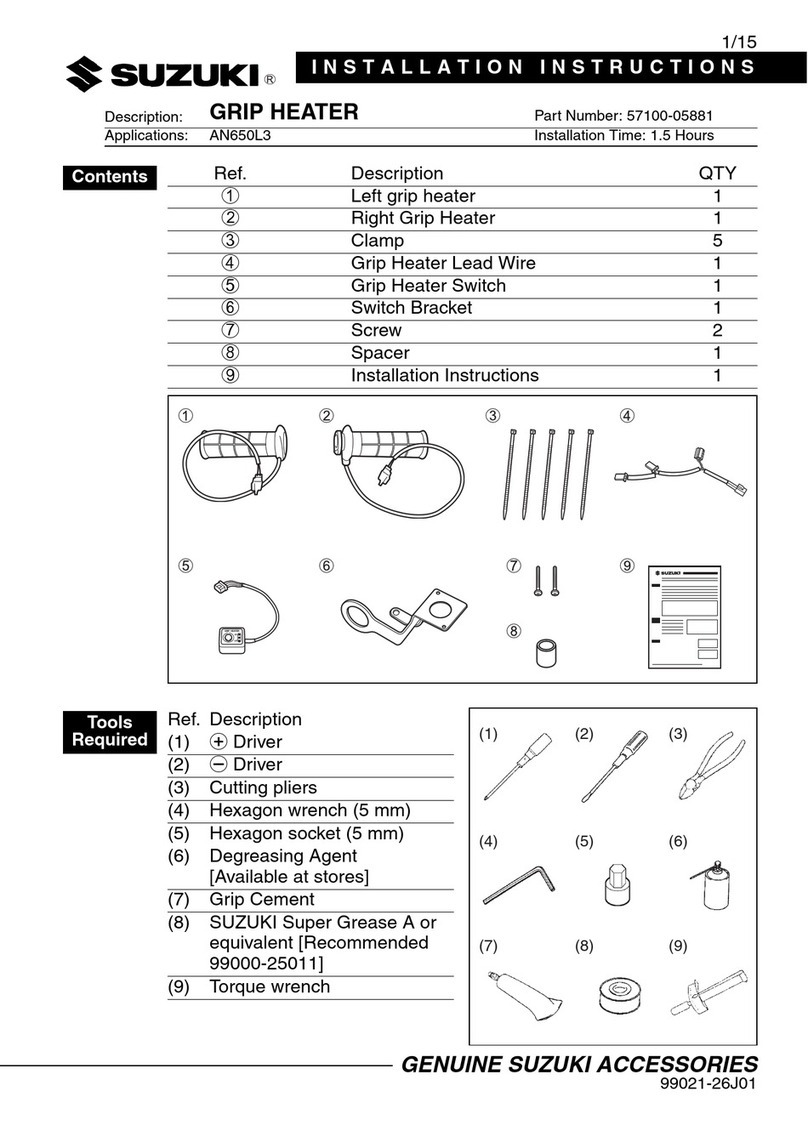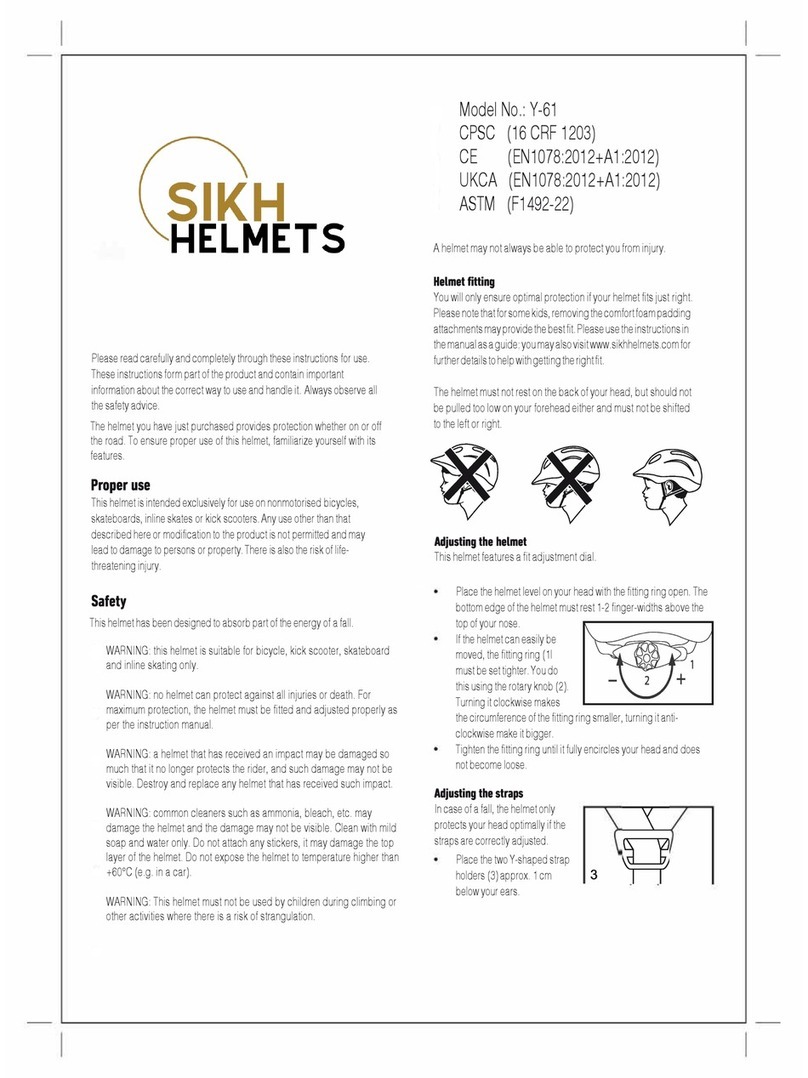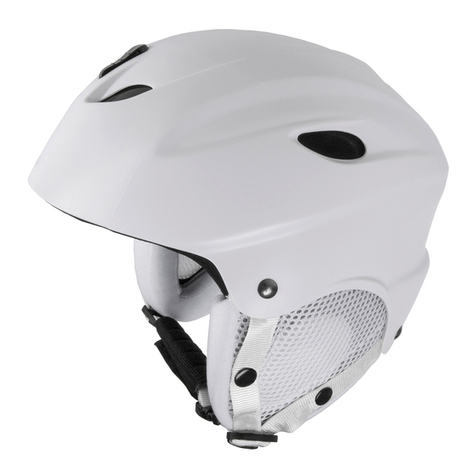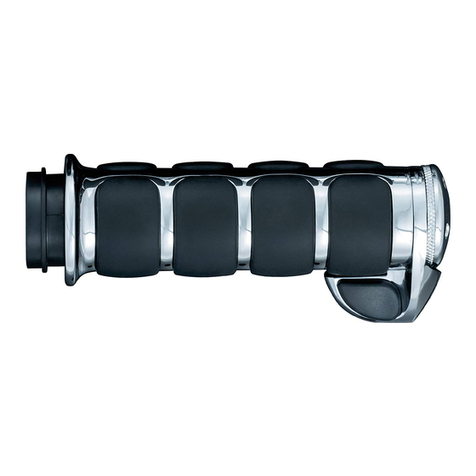
5
Machen Sie sich vor dem ersten Gebrauch mit dem Produkt vertraut. Lesen Sie hierzu
aufmerksam die Bedienungsanleitung und die Sicherheitshinweise. Benutzen Sie das
Produkt nur wie beschrieben und für die angegebenen Einsatzbereiche. Bewahren Sie diese
Anleitung gut auf. Händigen Sie alle Unterlagen bei Weitergabe des Produkts an Dritte
ebenfalls mit aus.
Sicherheitshinweise
• Warnhinweis! Dieser Helm sollte nicht durch Kinder beim Klettern oder anderen
Aktivitäten verwendet werden, wenn ein Risiko besteht, sich zu strangulieren/hängen
zu bleiben, falls sich das Kind mit dem Helm verfängt.
• Ihr Helm wurde speziell zum Schutz beim Radfahren 1, Skateboarden 3,
Rollerskaten 2und Tretrollerfahren 4entwickelt. Er darf nicht für andere Sportarten
oder zum Motorradfahren 5eingesetzt werden.
• Bitte beachten Sie, dass der Helm nur schützen kann, wenn er richtig passt. Probieren
Sie beim Kauf unbedingt verschiedene Größen aus.
• Bitte beachten Sie, dass trotz der richtigen Einstellung ein Helm nicht immer vor allen
Verletzungen schützen kann.
• In regelmäßigen Abständen muss der Helm auf sichtbare Mängel überprüft werden.
• Nach jedem harten Aufprall, Schlag oder tiefem Kratzer muss der Helm ersetzt
werden, da er dadurch seine Schutzwirkung verliert.
• Der Helm sollte auch erstetzt werden, wenn er nicht mehr richtig passt oder spätestens
5 Jahre nach Herstelldatum auch wenn keine Beschädigungen feststellbar sind.
• Eine Veränderung oder Entfernung von Originalteilen des Helmes kann die
Schutzwirkung extrem beeinträchtigen. Der Helm darf nicht verändert werden, um
Zusätze in einer nicht vom Hersteller empfohlenen Weise anzubringen.
• Innenpolster mit lauwarmem Wasser und milder Seife reinigen und anschließend an
der Luft trocknen lassen.
• Hohe Temperaturen, bereits ab 60° C, können den Helm ernsthaft beschädigen.
Unebene Helmoberächen und Bläschenbildung sind Anzeichen einer solchen
Beschädigung. Nicht hinter Glasscheiben z.B. im Auto oder in der Nähe von Heiz-
oder Wärmequellen aufbewahren.
Benutzerhinweise
1. Die richtige Helmposition
• Der Helm muss immer waagrecht auf Ihrem Kopf sitzen (Abb. A).
• Sitzt der Helm zu weit vorne, kann Ihre Sicht beeinträchtigt werden.
Fahrradhelm SP-91
